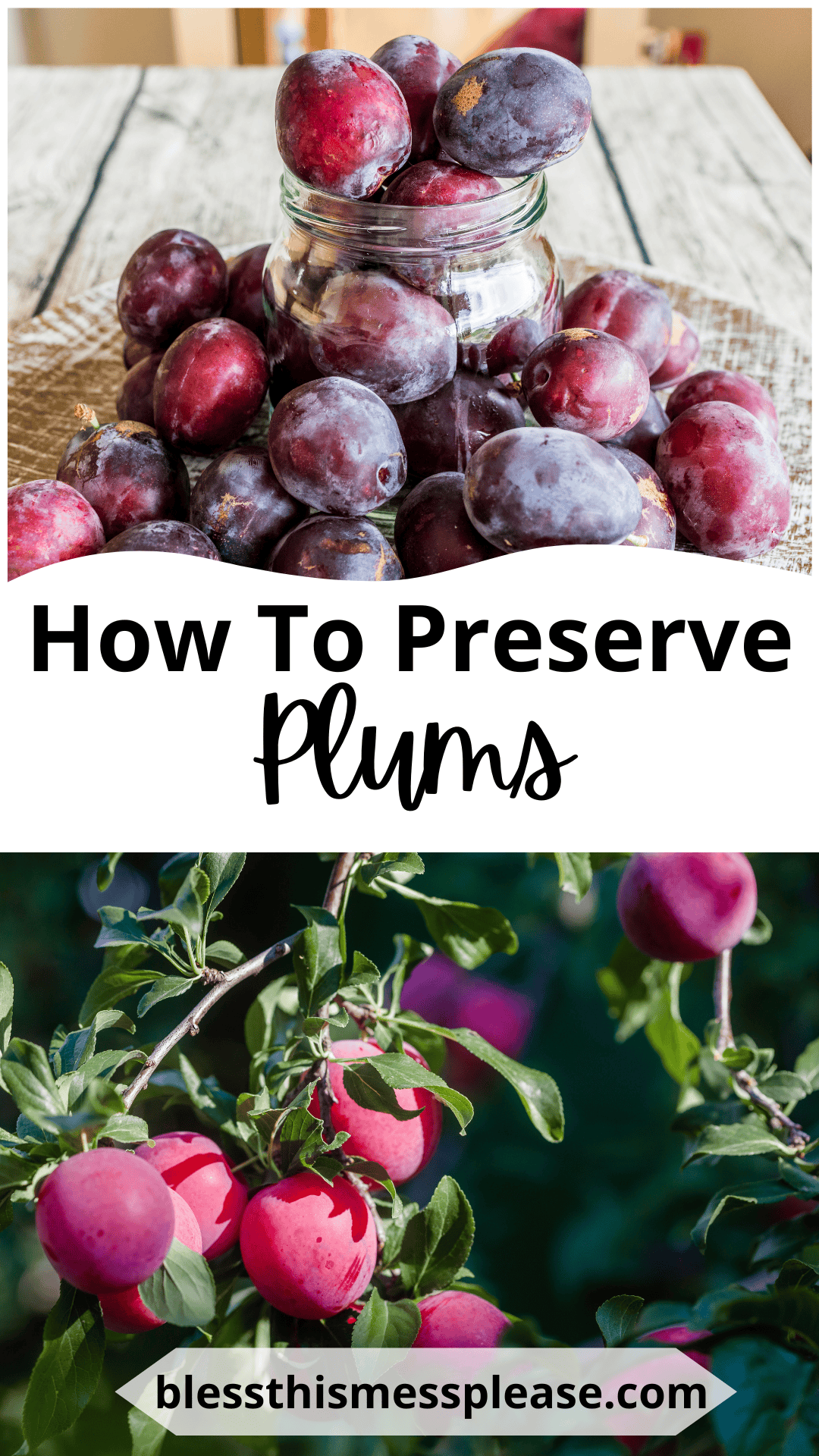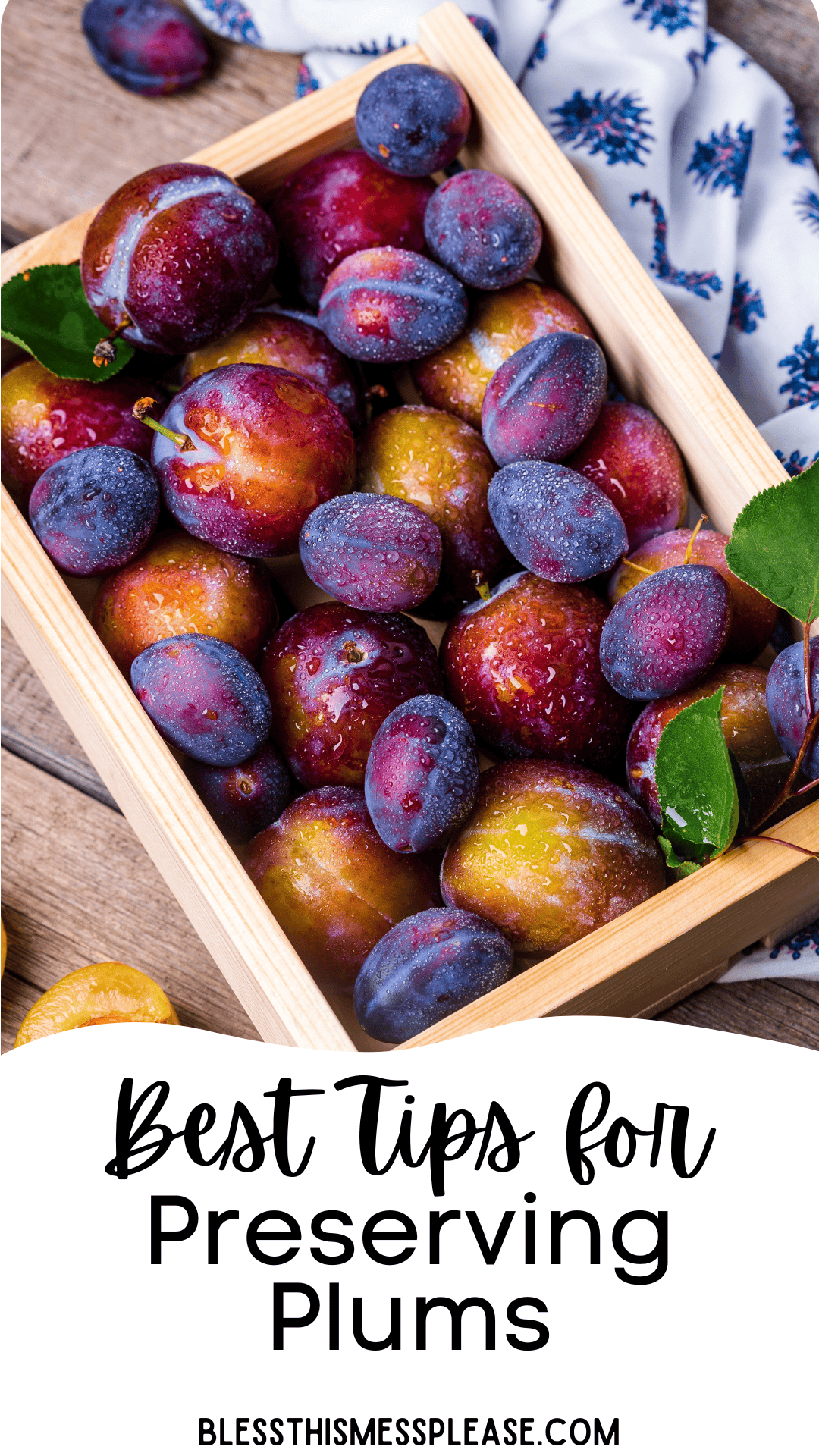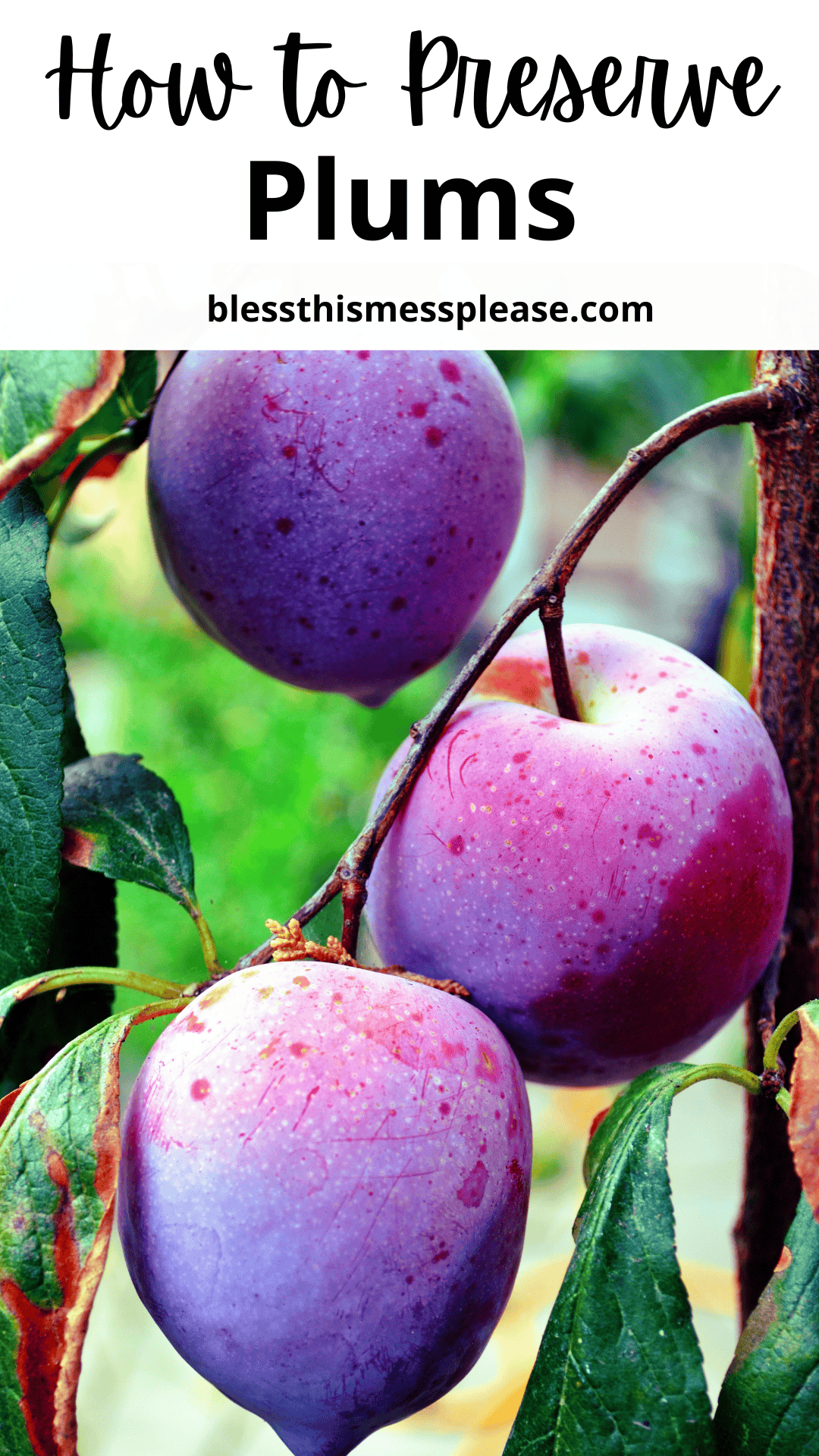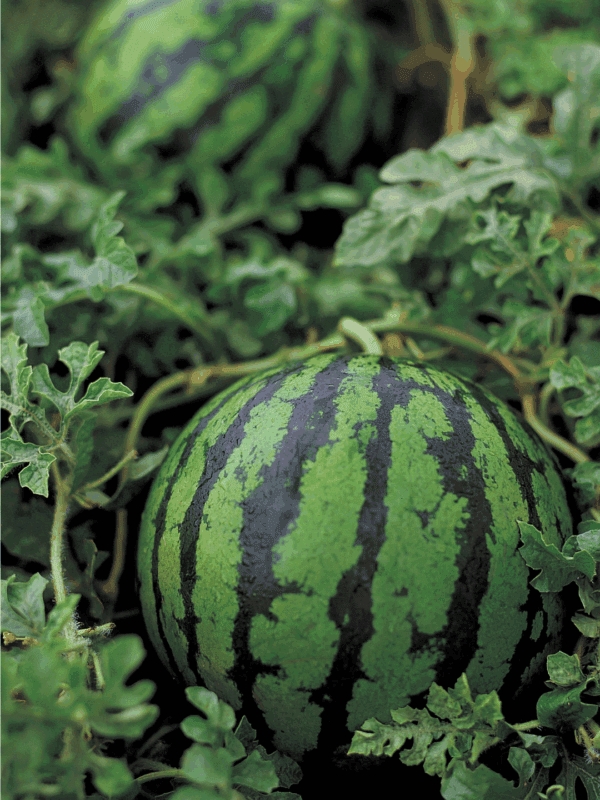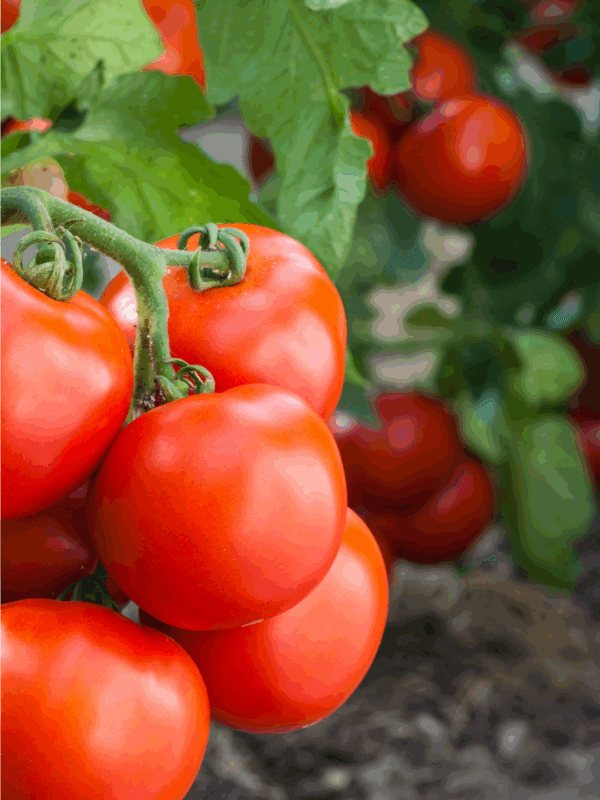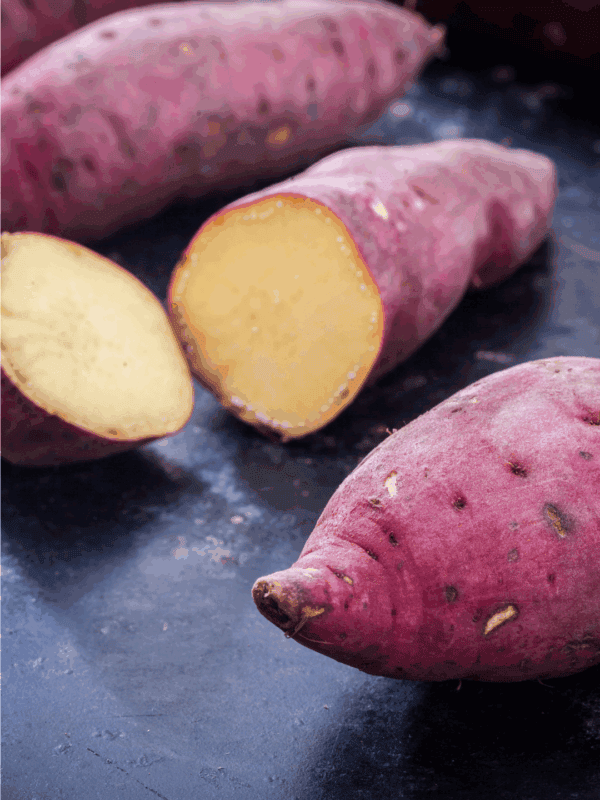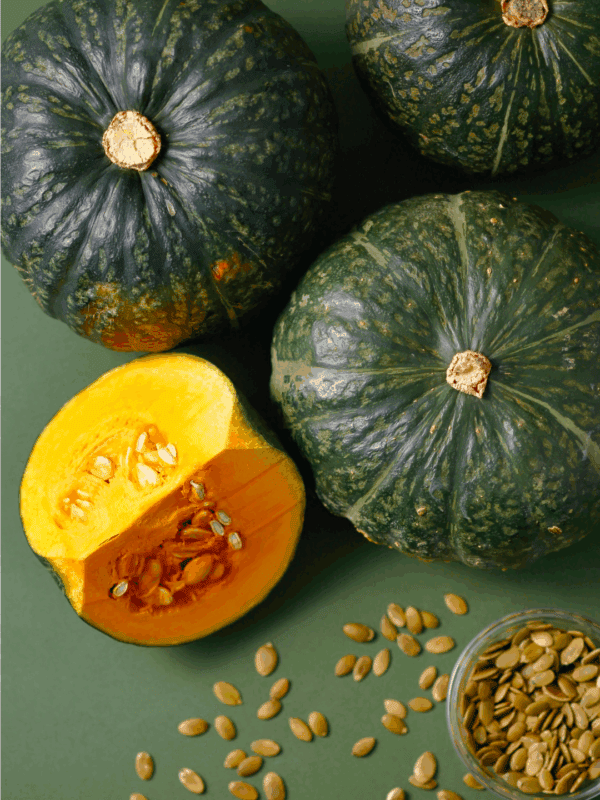This post may contain affiliate links. Please read our disclosure policy.
This guide will help teach you How To Preserve Plums in no time at all! With methods ranging from dehydrating, to canning, and even freezing, you’ll be a perfect plum preserver before you know it!

Preserving Guide: How To Preserve Plums
When plum season arrives with its abundance of sweet, juicy fruit, many home gardeners and fruit lovers find themselves with more plums than they can eat fresh. Learning how to preserve plums can transform this seasonal overflow into a year-round treasure!
Allowing you to capture peak flavor and nutrition for months to come, these proven preservation methods will help you make the most of every single perfectly pink plum!
Table of Contents

When To Harvest Plums
With both Japanese and European varieties of plums, the taste test is probably the best way to determine readiness for harvest. They should just be beginning to soften. The taste test should reveal fruit which are soft, sweet and juicy.
Watching the ground color on many European varieties is often a help. It becomes yellowish in contrast to the dull greenish color of the immature state. Ripeness of Italian prunes should be determined by taste. Japanese plums will often look highly colored before they are ripe, so color should not be used to assess ripeness; use the taste test.
How To Store Plums
Allow your plums to ripen on the counter first, then refrigerate.
How To Dehydrate Plums
- CUT: Leave whole
- DIPPING: If sun drying, dip in boiling water for 30 seconds or more to check skins. If drying in oven or dehydrator, rinse in hot tap water.
- DEHYDRATOR: 24-36 hours
- APPEARANCE WHEN DRY: pliable, leathery
Canning Plums
QUANTITY: An average of 14 pounds is needed per canner load of 7 quarts; an average of 9 pounds is needed per canner load of 9 pints. A bushel weighs 56 pounds and yields 22 to 36 quarts – an average of 2 pounds per quart.
PREPARE PLUMS:
Stem and wash plums.
To can whole, prick skins on two sides of plums with fork to prevent splitting. Freestone varieties may be halved and pitted.
If you use syrup, prepare very light, light, or medium syrup.
HOT PACK
- Add plums to water or hot syrup and boil 2 minutes.
- Cover saucepan and let stand 20 to 30 minutes.
- Fill jars with hot plums and cooking liquid or syrup, leaving 1/2-inch headspace.
- Adjust lids and process in Boiling Water Bath: pints for 20 minutes, quarts for 25 minutes.
RAW PACK
- Fill jars with raw plums, packing firmly.
- Add hot water or syrup, leaving 1/2-inch headspace.
- Adjust lids and process in Boiling Water Bath: pints for 20 minutes, quarts for 25 minutes.

Freezing Plums
PREPARING PLUMS
- Select firm, ripe fruit soft enough to yield to slight pressure.
- Sort and wash.
- Leave whole or cut in halves or quarters and pit.
SYRUP PACK
- Use cold 40 to 50 percent syrup, depending on tartness of fruit.
- For a better quality product, add 1/2 teaspoon ascorbic acid per quart of syrup.
- Put plums directly into cold syrup in container, starting with 1/2 cup syrup to a pint container.
- Press fruit down and add syrup to cover, leaving headspace.
- Place a small piece of crumpled water-resistant paper on top to hold fruit down.
- Seal and freeze.
🍎🫙 Get a free Preserving Guide for all the details to dehydrate, can, and freeze 42 fruits and vegetables — get the FREE GUIDE here!
Expert Tips
- Storage Time: Properly canned plums last 1-2 years in a cool, dark pantry. Frozen plums maintain best quality for 8-12 months at 0°F or below. Dehydrated plums stay fresh for 6-12 months in airtight containers away from light and heat. Always check for signs of spoilage before consuming
- Peeling or Not Peeling Plums: If you’re wondering about leaving the skin on or not, remember, plum skins are edible and contain beneficial nutrients and fiber. Leaving the skin on actually helps maintain the fruit’s shape during preservation and adds nutritional value. I’d recommend only removing the skin if your specific recipe requires it, or for personal preference.
- Preventing Browning: Plums naturally contain less enzyme activity than apples or pears, so browning is less of an issue. However, you can dip cut plums in lemon juice or ascorbic acid solution before preservation. Working quickly and keeping cut fruit covered also minimizes exposure to air.
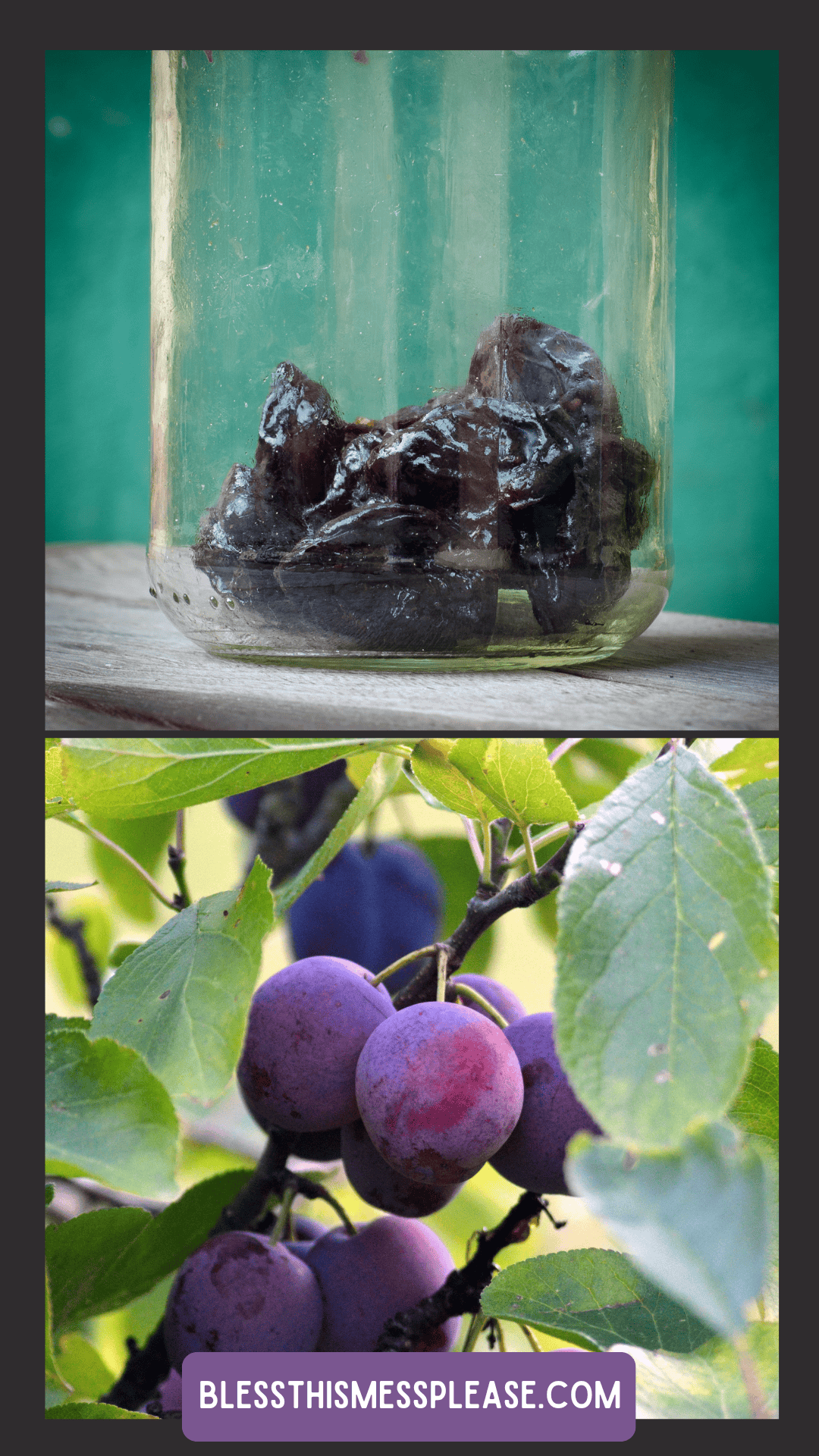
More Tips For Preserving The Harvest
Preserving Guide
How To Preserve Watermelon
Preserving Guide
How To Preserve Tomatoes
Preserving Guide
How To Preserve Sweet Potatoes
Preserving Guide
How To Preserve Winter Squash
Did you use any of these preserving tips? Leave a note below in the comments or share it on Instagram, Facebook, or Pinterest!

